Pixar theme by Snowlegend
Download: Pixar_2.p3t
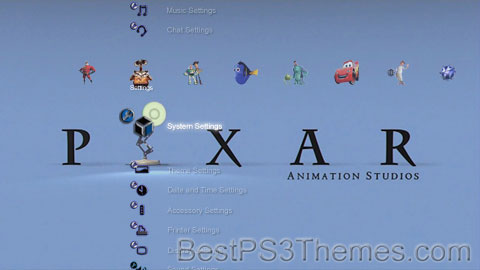
(8 backgrounds)
Logo used since 1995 | |
 Headquarters in Emeryville, California | |
| Company type | Subsidiary |
|---|---|
| Industry | Animation |
| Predecessor | The Graphics Group of Lucasfilm Computer Division (1979–1986) |
| Founded | February 3, 1986 in Richmond, California |
| Founders | |
| Headquarters | 1200 Park Avenue, , U.S. |
Area served | Worldwide |
Key people |
|
| Products | Computer animations |
| Brands | |
Number of employees | 1,233 (2020) |
| Parent | Walt Disney Studios (2006–present) |
| Website | www |
| Footnotes / references [1][2][3] | |
Pixar Animation Studios, known simply as Pixar (/ˈpɪksɑːr/), is an American animation studio based in Emeryville, California, known for its critically and commercially successful computer-animated feature films. Since 2006, Pixar has been a subsidiary of Walt Disney Studios, a division of Disney Entertainment, a segment of the Walt Disney Company.
Pixar started in 1979 as part of the Lucasfilm computer division. It was known as the Graphics Group before its spin-off as a corporation in 1986, with funding from Apple co-founder Steve Jobs who became its majority shareholder.[2] Disney announced its acquisition of Pixar in January 2006, and completed it in May 2006.[4][5][6] Pixar is best known for its feature films, technologically powered by RenderMan, the company's own implementation of the industry-standard RenderMan Interface Specification image-rendering API. The studio's mascot is Luxo Jr., a desk lamp from the studio's 1986 short film of the same name.
Pixar has produced 28 feature films, starting with Toy Story (1995), which is the first fully computer-animated feature film; its most recent film was Inside Out 2 (2024). The studio has also produced many short films. As of July 2023[update], its feature films have earned over $15 billion at the worldwide box office with an average gross of $546.9 million per film.[7] Toy Story 3 (2010), Finding Dory (2016), Incredibles 2 (2018), Toy Story 4 (2019) and Inside Out 2 (2024) all grossed over $1 billion and are among the 50 highest-grossing films of all time. Moreover, 15 of Pixar's films are in the 50 highest-grossing animated films of all time.
Pixar has earned 23 Academy Awards, 10 Golden Globe Awards, and 11 Grammy Awards, along with numerous other awards and acknowledgments. Since its inauguration in 2001, eleven Pixar films have won the Academy Award for Best Animated Feature, including Finding Nemo (2003), The Incredibles (2004), Ratatouille (2007), WALL-E (2008), Up (2009), the aforementioned Toy Story 3 and Toy Story 4, Brave (2012), Inside Out (2015), Coco (2017), and Soul (2020). Toy Story 3 and Up were also nominated for the Academy Award for Best Picture.
In February 2009, Pixar executives John Lasseter, Brad Bird, Pete Docter, Andrew Stanton, and Lee Unkrich were presented with the Golden Lion award for Lifetime Achievement by the Venice Film Festival. The physical award was ceremoniously handed to Lucasfilm's founder, George Lucas.
History[edit]
Early history[edit]
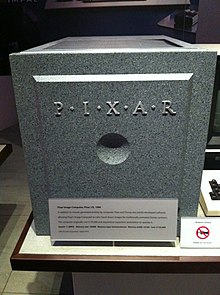
Pixar got its start in 1974, when New York Institute of Technology's (NYIT) founder, Alexander Schure, who was also the owner of a traditional animation studio, established the Computer Graphics Lab (CGL) and recruited computer scientists who shared his ambitions about creating the world's first computer-animated film. Edwin Catmull and Malcolm Blanchard were the first to be hired and were soon joined by Alvy Ray Smith and David DiFrancesco some months later, which were the four original members of the Computer Graphics Lab, located in a converted two-story garage acquired from the former Vanderbilt-Whitney estate.[8][9] Schure invested significant funds into the computer graphics lab, approximately $15 million, providing the resources the group needed but contributing to NYIT's financial difficulties.[10] Eventually, the group realized they needed to work in a real film studio to reach their goal. Francis Ford Coppola then invited Smith to his house for a three-day media conference, where Coppola and George Lucas shared their visions for the future of digital moviemaking.[11]
When Lucas approached them and offered them a job at his studio, six employees moved to Lucasfilm. During the following months, they gradually resigned from CGL, found temporary jobs for about a year to avoid making Schure suspicious, and joined the Graphics Group at Lucasfilm.[12][13] The Graphics Group, which was one-third of the Computer Division of Lucasfilm, was launched in 1979 with the hiring of Catmull from NYIT,[14] where he was in charge of the Computer Graphics Lab. He was then reunited with Smith, who also made the journey from NYIT to Lucasfilm, and was made the director of the Graphics Group. At NYIT, the researchers pioneered many of the CG foundation techniques — in particular, the invention of the alpha channel by Catmull and Smith.[15] Over the next several years, the CGL would produce a few frames of an experimental film called The Works. After moving to Lucasfilm, the team worked on creating the precursor to RenderMan, called REYES (for "renders everything you ever saw"), and developed several critical technologies for CG — including particle effects and various animation tools.[16]
John Lasseter was hired to the Lucasfilm team for a week in late 1983 with the title "interface designer"; he animated the short film The Adventures of André & Wally B.[17] In the next few years, a designer suggested naming a new digital compositing computer the "Picture Maker". Smith suggested that the laser-based device have a catchier name, and came up with "Pixer", which after a meeting was changed to "Pixar".[18] According to Michael Rubin, the author of Droidmaker: George Lucas and the Digital Revolution, Smith and three other employees came up with the name during a restaurant visit in 1981, but when interviewing them he got four different versions about the origin of the name.[19]
In 1982, the Pixar team began working on special-effects film sequences with Industrial Light & Magic. After years of research, and key milestones such as the Genesis Effect in Star Trek II: The Wrath of Khan and the Stained Glass Knight in Young Sherlock Holmes,[14] the group, which then numbered 40 individuals, was spun out as a corporation in February 1986 by Catmull and Smith. Among the 38 remaining employees were Malcolm Blanchard, David DiFrancesco, Ralph Guggenheim, and Bill Reeves, who had been part of the team since the days of NYIT. Tom Duff, also an NYIT member, would later join Pixar after its formation.[2] With Lucas's 1983 divorce, which coincided with the sudden dropoff in revenues from Star Wars licenses following the release of Return of the Jedi, they knew he would most likely sell the whole Graphics Group. Worried that the employees would be lost to them if that happened, which would prevent the creation of the first computer-animated movie, they concluded that the best way to keep the team together was to turn the group into an independent company. But Moore's Law also suggested that sufficient computing power for the first film was still some years away, and they needed to focus on a proper product until then. Eventually, they decided they should be a hardware company in the meantime, with their Pixar Image Computer as the core product, a system primarily sold to governmental, scientific, and medical markets.[2][10][20] They also used SGI computers.[21]
In 1983, Nolan Bushnell founded a new computer-guided animation studio called Kadabrascope as a subsidiary of his Chuck E. Cheese's Pizza Time Theatres company (PTT), which was founded in 1977. Only one major project was made out of the new studio, an animated Christmas special for NBC starring Chuck E. Cheese and other PTT mascots; known as "Chuck E. Cheese: The Christmas That Almost Wasn't". The animation movement would be made using tweening instead of traditional cel animation. After the video game crash of 1983, Bushnell started selling some subsidiaries of PTT to keep the business afloat. Sente Technologies (another division, was founded to have games distributed in PTT stores) was sold to Bally Games and Kadabrascope was sold to Lucasfilm. The Kadabrascope assets were combined with the Computer Division of Lucasfilm.[22] Coincidentally, one of Steve Jobs's first jobs was under Bushnell in 1973 as a technician at his other company Atari, which Bushnell sold to Warner Communications in 1976 to focus on PTT.[23] PTT would later go bankrupt in 1984 and be acquired by ShowBiz Pizza Place.[24]
Independent company (1986–1999)[edit]

In 1986, the newly independent Pixar was headed by President Edwin Catmull and Executive Vice President Alvy Ray Smith. Lucas's search for investors led to an offer from Steve Jobs, which Lucas initially found too low. He eventually accepted after determining it impossible to find other investors. At that point, Smith and Catmull had been declined by 35 venture capitalists and ten large corporations,[25] including a deal with General Motors which fell through three days before signing the contracts.[26] Jobs, who had been edged out of Apple in 1985,[2] was now founder and CEO of the new computer company NeXT. On February 3, 1986, he paid $5 million of his own money to George Lucas for technology rights and invested $5 million cash as capital into the company, joining the board of directors as chairman.[2][27]
In 1985 while still at Lucasfilm, they had made a deal with the Japanese publisher Shogakukan to make a computer-animated movie called Monkey, based on the Monkey King. The project continued sometime after they became a separate company in 1986, but it became clear that the technology was not sufficiently advanced. The computers were not powerful enough and the budget would be too high. As a result they focused on the computer hardware business for years until a computer-animated feature became feasible according to Moore's law.[28][29]
At the time, Walt Disney Studios made the decision to develop more efficient ways of producing animation. They reached out to Graphics Group at Lucasfilm and to Digital Productions. Because of the Graphics Group's deeper understanding of animation, and Smith's experience with paint programs at NYIT, it convinced Disney they were the right choice. In May 1986 Pixar signed a contract with Disney, who eventually bought and used the Pixar Image Computer and custom software written by Pixar as part of its Computer Animation Production System (CAPS) project, to migrate the laborious ink and paint part of the 2D animation process to a more automated method.[30] The company's first feature film to be released using this new animation method was The Rescuers Down Under (1990).[31][32]
In a bid to drive sales of the system and increase the company's capital, Jobs suggested releasing the product to the mainstream market. Pixar employee John Lasseter, who had long been working on not-for-profit short demonstration animations, such as Luxo Jr. (1986) to show off the device's capabilities, premiered his creations to great fanfare at SIGGRAPH, the computer graphics industry's largest convention.[33]
However, the Image Computer had inadequate sales[33] which threatened to end the company as financial losses grew. Jobs increased investment in exchange for an increased stake, reducing the proportion of management and employee ownership until eventually, his total investment of $50 million gave him control of the entire company. In 1989, Lasseter's growing animation department which was originally composed of just four people (Lasseter, Bill Reeves, Eben Ostby, and Sam Leffler), was turned into a division that produced computer-animated commercials for outside companies.[1][34][35] In April 1990, Pixar sold its hardware division, including all proprietary hardware technology and imaging software, to Vicom Systems, and transferred 18 of Pixar's approximately 100 employees. In the same year Pixar moved from San Rafael to Richmond, California.[36] Pixar released some of its software tools on the open market for Macintosh and Windows systems. RenderMan is one of the leading 3D packages of the early 1990s, and Typestry is a special-purpose 3D text renderer that competed with RayDream.[citation needed]
During this period of time, Pixar continued its successful relationship with Walt Disney Feature Animation, a studio whose corporate parent would ultimately become its most important partner. As 1991 began, however the layoff of 30 employees in the company's computer hardware department—including the company's president, Chuck Kolstad,[37] reduced the total number of employees to just 42, approximately its original number.[38] On March 6, 1991, Steve Jobs bought the company from its employees and became the full owner. He contemplated folding it into NeXT, but the NeXT's co-founders refused.[26] A few months later Pixar made a historic $26 million deal with Disney to produce three computer-animated feature films, the first of which was Toy Story (1995), the product of the technological limitations that challenged CGI.[39] By then the software programmers, who were doing RenderMan and IceMan, and Lasseter's animation department, which made television commercials (and four Luxo Jr. shorts for Sesame Street the same year), were all that remained of Pixar.[40]
Despite the income from these projects, the company still continued to lose money and Steve Jobs, as chairman of the board and now owner, often considered selling it. As late as 1994, Jobs contemplated selling Pixar to other companies such as Hallmark Cards, Microsoft co-founder Paul Allen, and Oracle CEO and co-founder Larry Ellison.[41] After learning from New York critics that Toy Story would probably be a hit, and confirming that Disney would distribute it for the 1995 Christmas season, he decided to give Pixar another chance.[42][43] Also for the first time, he took an active leadership role in the company and made himself CEO.[44] Toy Story grossed more than $373 million worldwide[45] and, when Pixar held its initial public offering on November 29, 1995, it exceeded Netscape's as the biggest IPO of the year. In its first half-hour of trading, Pixar stock shot from $22 to $45, delaying trading because of unmatched buy orders. Shares climbed to US$49 and closed the day at $39.[46]
The company continued to make the television commercials during the production of Toy Story, which came to an end on July 9, 1996, when Pixar announced they would shut down its television commercial unit, which counted 18 employees, to focus on longer projects and interactive entertainment.[47][48]
During the 1990s and 2000s, Pixar gradually developed the "Pixar Braintrust", the studio's primary creative development process, in which all of its directors, writers, and lead storyboard artists regularly examine each other's projects and give very candid "notes", the industry term for constructive criticism.[49] The Braintrust operates under a philosophy of a "filmmaker-driven studio", in which creatives help each other move their films forward through a process somewhat like peer review, as opposed to the traditional Hollywood approach of an "executive-driven studio" in which directors are micromanaged through "mandatory notes" from development executives outranking the producers.[50][51] According to Catmull, it evolved out of the working relationship between Lasseter, Andrew Stanton, Pete Docter, Lee Unkrich, and Joe Ranft on Toy Story.[49]
As a result of the success of Toy Story, Pixar built a new studio at the Emeryville campus which was designed by PWP Landscape Architecture and opened in November 2000.[citation needed]
Collaboration with Disney (1999–2006)[edit]
Pixar and Disney had disagreements over the production of Toy Story 2. Originally intended as a direct-to-video release (and thus not part of Pixar's three-picture deal), the film was eventually upgraded to a theatrical release during production. Pixar demanded that the film then be counted toward the three-picture agreement, but Disney refused.[52] Though profitable for both, Pixar later complained that the arrangement was not equitable. Pixar was responsible for creation and production, while Disney handled marketing and distribution. Profits and production costs were split equally, but Disney exclusively owned all story, character, and sequel rights and also collected a 10- to 15-percent distribution fee.[53]
The two companies attempted to reach a new agreement for ten months and failed on January 26, 2001, July 26, 2002, April 22, 2003, January 16, 2004, July 22, 2004, and January 14, 2005. The proposed distribution deal meant Pixar would control production and own the resulting story, character, and sequel rights, while Disney would own the right of first refusal to distribute any sequels. Pixar also wanted to finance its own films and collect 100 percent profit, paying Disney the 10- to 15-percent distribution fee.[54] In addition, as part of any distribution agreement with Disney, Pixar demanded control over films already in production under the old agreement, including The Incredibles (2004) and Cars (2006). Disney considered these conditions unacceptable, but Pixar would not concede.
Disagreements between Steve Jobs and Disney chairman and CEO Michael Eisner caused the negotiations to cease in 2004, with Disney forming Circle Seven Animation and Jobs declaring that Pixar was actively seeking partners other than Disney.[55] Despite this announcement and several talks with Warner Bros., Sony Pictures, and 20th Century Fox, Pixar did not enter negotiations with other distributors,[56] although a Warner Bros. spokesperson told CNN, "We would love to be in business with Pixar. They are a great company."[54] After a lengthy hiatus, negotiations between the two companies resumed following the departure of Eisner from Disney in September 2005. In preparation for potential fallout between Pixar and Disney, Jobs announced in late 2004 that Pixar would no longer release movies at the Disney-dictated November time frame, but during the more lucrative early summer months. This would also allow Pixar to release DVDs for its major releases during the Christmas shopping season. An added benefit of delaying Cars from November 4, 2005, to June 9, 2006, was to extend the time frame remaining on the Pixar-Disney contract, to see how things would play out between the two companies.[56]
Pending the Disney acquisition of Pixar, the two companies created a distribution deal for the intended 2007 release of Ratatouille, to ensure that if the acquisition failed, this one film would be released through Disney's distribution channels. In contrast to the earlier Pixar deal, Ratatouille was meant to remain a Pixar property and Disney would have received a distribution fee. The completion of Disney's Pixar acquisition, however, nullified this distribution arrangement.[57]
Walt Disney Studios subsidiary (2006–present)[edit]
After extended negotiations, Disney ultimately agreed on January 24, 2006, to buy Pixar for approximately $7.4 billion in an all-stock deal.[58] Following Pixar shareholder approval, the acquisition was completed on May 5, 2006. The transaction catapulted Jobs, who owned 49.65% of total share interest in Pixar, to Disney's largest individual shareholder with 7%, valued at $3.9 billion, and a new seat on its board of directors.[6][59] Jobs' new Disney holdings exceeded holdings belonging to Eisner, the previous top shareholder, who still held 1.7%; and Disney Director Emeritus Roy E. Disney, who held almost 1% of the corporation's shares. Pixar shareholders received 2.3 shares of Disney common stock for each share of Pixar common stock redeemed.[60]
As part of the deal, John Lasseter, by then Executive Vice President, became Chief Creative Officer (reporting directly to president and CEO Bob Iger and consulting with Disney Director Roy E. Disney) of both Pixar and Walt Disney Animation Studios (including its division Disneytoon Studios), as well as the Principal Creative Adviser at Walt Disney Imagineering, which designs and builds the company's theme parks.[59] Catmull retained his position as President of Pixar, while also becoming President of Walt Disney Animation Studios, reporting to Iger and Dick Cook, chairman of the Walt Disney Studios. Jobs's position as Pixar's chairman and chief executive officer was abolished, and instead, he took a place on the Disney board of directors.[61]
After the deal closed in May 2006, Lasseter revealed that Iger had felt that Disney needed to buy Pixar while watching a parade at the opening of Hong Kong Disneyland in September 2005.[62] Iger noticed that of all the Disney characters in the parade, none were characters that Disney had created within the last ten years since all the newer ones had been created by Pixar.[62] Upon returning to Burbank, Iger commissioned a financial analysis that confirmed that Disney had actually lost money on animation for the past decade, then presented that information to the board of directors at his first board meeting after being promoted from COO to CEO, and the board, in turn, authorized him to explore the possibility of a deal with Pixar.[63] Lasseter and Catmull were wary when the topic of Disney buying Pixar first came up, but Jobs asked them to give Iger a chance (based on his own experience negotiating with Iger in summer 2005 for the rights to
Harry Potter theme by Dennis “F-Rott” Ferrand Download: HarryPotter.p3t
Harry Potter is a series of seven fantasy novels written by British author J. K. Rowling. The novels chronicle the lives of a young wizard, Harry Potter, and his friends Hermione Granger and Ron Weasley, all of whom are students at Hogwarts School of Witchcraft and Wizardry. The main story arc concerns Harry's conflict with Lord Voldemort, a dark wizard who intends to become immortal, overthrow the wizard governing body known as the Ministry of Magic, and subjugate all wizards and Muggles (non-magical people).
The series was originally published in English by Bloomsbury in the United Kingdom and Scholastic Press in the United States. A series of many genres, including fantasy, drama, coming-of-age fiction, and the British school story (which includes elements of mystery, thriller, adventure, horror, and romance), the world of Harry Potter explores numerous themes and includes many cultural meanings and references.[1] Major themes in the series include prejudice, corruption, madness, and death.[2][3]
Since the release of the first novel, Harry Potter and the Philosopher's Stone, on 26 June 1997, the books have found immense popularity, positive reviews, and commercial success worldwide. They have attracted a wide adult audience as well as younger readers, and are widely considered cornerstones of modern literature.[4][5] As of February 2023[update], the books have sold more than 600 million copies worldwide, making them the best-selling book series in history, and have been available in 85 languages.[6] The last four books consecutively set records as the fastest-selling books in history, with the final instalment selling roughly 2.7 million copies in the United Kingdom and 8.3 million copies in the United States within twenty-four hours of its release.
The original seven books were adapted into an eight-part namesake film series by Warner Bros. Pictures. In 2016, the total value of the Harry Potter franchise was estimated at $25 billion,[7] making Harry Potter one of the highest-grossing media franchises of all time. Harry Potter and the Cursed Child is a play based on a story co-written by Rowling.
The success of the books and films has allowed the Harry Potter franchise to expand with numerous derivative works, a travelling exhibition that premiered in Chicago in 2009, a studio tour in London that opened in 2012, a digital platform on which J. K. Rowling updates the series with new information and insight, and a trilogy of spin-off films premiering in November 2016 with Fantastic Beasts and Where to Find Them, among many other developments. Themed attractions, collectively known as The Wizarding World of Harry Potter, have been built at several Universal Destinations & Experiences amusement parks around the world.
The series follows the life of a boy named Harry Potter. In the first book, Harry Potter and the Philosopher's Stone, Harry lives in a cupboard under the stairs in the house of the Dursleys, his aunt, uncle and cousin, who all treat him poorly. At the age of 11, Harry discovers that he is a wizard. He meets a half-giant named Hagrid who gives him a letter of acceptance to attend the Hogwarts School of Witchcraft and Wizardry. Harry learns that his parents, Lily and James Potter, also had magical powers, and were murdered by the dark wizard Lord Voldemort when Harry was a baby. When Voldemort attempted to kill Harry, his curse rebounded, seemingly killing Voldemort, and Harry survived with a lightning-shaped scar on his forehead. The event made Harry famous among the community of wizards and witches.
Harry becomes a student at Hogwarts and is sorted into Gryffindor House. He gains the friendship of Ron Weasley, a member of a large but poor wizarding family, and Hermione Granger, a witch of non-magical, or Muggle, parentage. The trio develop an enmity with the rich pure-blood student Draco Malfoy. Harry encounters the school's headmaster, Albus Dumbledore; the potions professor, Severus Snape, who displays a dislike for him; and the Defence Against the Dark Arts teacher, Quirinus Quirrell. Quirrell turns out to be allied with Voldemort, who is still alive as a weak spirit. The first book concludes with Harry's confrontation with Voldemort, who, in his quest to regain a body, yearns to possess the Philosopher's Stone, a substance that bestows everlasting life.
Harry Potter and the Chamber of Secrets describes Harry's second year at Hogwarts. Students are attacked and petrified by an unknown creature; wizards of Muggle parentage are the primary targets. The attacks appear related to the mythical Chamber of Secrets and resemble attacks fifty years earlier. Harry discovers an ability to speak the snake language Parseltongue, which he learns is rare and associated with the Dark Arts. When Hermione is attacked and Ron's younger sister, Ginny Weasley, abducted, Harry and Ron uncover the chamber's secrets and enter it. Harry discovers that Ginny was possessed by an old diary, inside which the memory of Tom Marvolo Riddle, Voldemort's younger self, resides. On Voldemort's behalf, Ginny opened the chamber and unleashed the basilisk, an ancient monster that kills or petrifies those who make direct or indirect eye contact, respectively. With the help of Dumbledore's phoenix, Fawkes, and the Sword of Gryffindor, Harry slays the basilisk and destroys the diary.
In the third novel, Harry Potter and the Prisoner of Azkaban, Harry learns that he is targeted by Sirius Black, an escaped convict who allegedly assisted in his parents' murder. Dementors, creatures that feed on despair, search for Sirius and guards the school. As Harry struggles with his reaction to the dementors, he reaches out to Remus Lupin, a new professor who teaches him the Patronus charm. On a windy night, Ron is dragged by a black dog into the Shrieking Shack, a haunted house, and Harry and Hermione follow. The dog is revealed to be Sirius Black. Lupin enters the shack and explains that Sirius was James Potter's best friend; he was framed by another friend of James, Peter Pettigrew, who hides as Ron's pet rat, Scabbers. As the full moon rises, Lupin transforms into a werewolf and bounds away, and the group chase after him. They are surrounded by dementors, but are saved by a figure resembling James who casts a stag Patronus. This is later revealed to be a future version of Harry, who traveled back in time with Hermione using a device called a Time Turner. The duo help Sirius escape on a Hippogriff, while Pettigrew escapes.
In Harry's fourth year of school (detailed in Harry Potter and the Goblet of Fire), Hogwarts hosts the Triwizard Tournament, a contest between Hogwarts and the schools Beauxbatons and Durmstrang. Harry is unwillingly entered into the contest, becoming Hogwarts' second participant after Cedric Diggory, an unusual occurrence that causes his friends to distance themselves from him. Harry claims the Triwizard Cup with Cedric, but he is teleported to a graveyard where Pettigrew kills Cedric, then resurrects Voldemort using Harry's blood. Voldemort convenes his supporters, the Death Eaters, and Harry manages to escape after a duel with Voldemort. Upon returning to Hogwarts, it is revealed that a Death Eater, Barty Crouch, Jr, in disguise as the new Defence Against the Dark Arts professor, Alastor "Mad-Eye" Moody, engineered Harry's entry into the tournament, secretly helped him, and had him teleported to Voldemort.
In the fifth book, Harry Potter and the Order of the Phoenix, the Ministry of Magic refuses to believe that Voldemort has returned. Dumbledore re-activates the Order of the Phoenix, a secret society to counter Voldemort; meanwhile, the Ministry tightens control of Hogwarts by appointing Dolores Umbridge as High Inquisitor of Hogwarts, and she gradually increases her powers. When Umbridge bans practical teaching of Defence Against the Dark Arts, Harry, Ron and Hermione form "Dumbledore's Army", a secret group to continue the teachings. Harry has recurring dreams of a dark corridor in the Ministry of Magic, eventually dreaming that Sirius is being tortured there. He races to the Ministry with his friends, but it is a trap, planted in his head by Voldemort. The group are attacked by Death Eaters and saved by the Order of the Phoenix, but Sirius is killed in the battle. A duel between Dumbledore and Voldemort convinces the ministry of Voldemort's return. A prophecy concerning Harry and Voldemort is revealed: one must die at the hands of the other.
In the sixth book, Harry Potter and the Half-Blood Prince, Snape teaches Defence Against the Dark Arts while Horace Slughorn becomes the Potions master. Harry finds an old textbook with annotations by the Half-Blood Prince, due to which he achieves success in Potions class. Harry also takes lessons with Dumbledore, viewing memories about the early life of Voldemort in a device called a Pensieve. Harry learns from a drunken Slughorn that he used to teach Tom Riddle, and that Voldemort divided his soul into pieces, creating a series of Horcruxes. Harry and Dumbledore travel to a distant lake to destroy a Horcrux; they succeed, but Dumbledore weakens. On their return, they find Draco Malfoy and Death Eaters attacking the school. The book ends with the killing of Dumbledore by Professor Snape, the titular Half-Blood Prince.
In Harry Potter and the Deathly Hallows, the seventh and final novel in the series, Lord Voldemort gains control of the Ministry of Magic. Harry, Ron and Hermione learn about the Deathly Hallows, legendary items that lead to mastery over death. The group infiltrates the ministry, where they steal a locket Horcrux, and visit Godric's Hollow, where they are attacked by Nagini, Voldemort's snake. A silver doe Patronus leads them to the Sword of Gryffindor, with which they destroy the locket. They steal a Horcrux from Gringotts and travel to Hogwarts, culminating in a battle with the Death Eaters. Snape is killed by Voldemort out of paranoia, but he lends Harry his memories before he dies. Harry learns that Snape was always loyal to Dumbledore, and that Harry is himself a Horcrux. Harry surrenders to Voldemort and dies. The defenders of Hogwarts continue to fight on; Harry is resurrected, faces Voldemort and kills him.
An epilogue titled "Nineteen Years Later" describes the lives of the surviving characters and the impact of Voldemort's death. Harry and Ginny are married with three children, and Ron and Hermione are married with two children.
The novels fall into the genre of fantasy literature, and qualify as a type of fantasy called "urban fantasy", "contemporary fantasy", or "low fantasy". They are mainly dramas, and maintain a fairly serious and dark tone throughout, though they do contain some notable instances of tragicomedy and black humour. In many respects, they are also examples of the bildungsroman, or coming of age novel,[8] and contain elements of mystery, adventure, horror, thriller, and romance. The books are also, in the words of Stephen King, "shrewd mystery tales",[9] and each book is constructed in the manner of a Sherlock Holmes-style mystery adventure. The stories are told from a third person limited point of view with very few exceptions (such as the opening chapters of Philosopher's Stone, Goblet of Fire and Deathly Hallows and the first two chapters of Half-Blood Prince).
The series can be considered part of the British children's boarding school genre, which includes Rudyard Kipling's Stalky & Co., Enid Blyton's Malory Towers, St. Clare's and the Naughtiest Girl series, and Frank Richards's Billy Bunter novels: the Harry Potter books are predominantly set in Hogwarts, a fictional British boarding school for wizards, where the curriculum includes the use of magic.[10] In this sense they are "in a direct line of descent from Thomas Hughes's Tom Brown's School Days and other Victorian and Edwardian novels of British public school life", though they are, as many note, more contemporary, grittier, darker, and more mature than the typical boarding school novel, addressing serious themes of death, love, loss, prejudice, coming-of-age, and the loss of innocence in a 1990s British setting.[11][12][failed verification]
In Harry Potter, Rowling juxtaposes the extraordinary against the ordinary.[13] Her narrative features two worlds: a contemporary world inhabited by non-magical people called Muggles, and another featuring wizards. It differs from typical portal fantasy in that its magical elements stay grounded in the mundane.[14] Paintings move and talk; books bite readers; letters shout messages; and maps show live journeys, making the wizarding world both exotic and familiar.[13][15] This blend of realistic and romantic elements extends to Rowling's characters. Their names are often onomatopoeic[clarification needed]: Malfoy is difficult, Filch is unpleasant, and Lupin is a werewolf.[16][17] Harry is ordinary and relatable, with down-to-earth features such as wearing broken glasses;[18] the scholar Roni Natov terms him an "everychild".[19] These elements serve to highlight Harry when he is heroic, making him both an everyman and a fairytale hero.[18][20]
Each of the seven books is set over the course of one school year. Harry struggles with the problems he encounters, and dealing with them often involves the need to violate some school rules. If students are caught breaking rules, they are often disciplined by Hogwarts professors. The stories reach their climax in the summer term, near or just after final exams, when events escalate far beyond in-school squabbles and struggles, and Harry must confront either Voldemort or one of his followers, the Death Eaters, with the stakes a matter of life and death – a point underlined, as the series progresses, by characters being killed in each of the final four books.[21][22] In the aftermath, he learns important lessons through exposition and discussions with head teacher and mentor Albus Dumbledore. The only exception to this school-centred setting is the final novel, Harry Potter and the Deathly Hallows, in which Harry and his friends spend most of their time away from Hogwarts, and only return there to face Voldemort at the dénouement.[21]
The Harry Potter stories feature imagery and motifs drawn from Arthurian myth and fairytales. Harry's ability to draw the Sword of Gryffindor from the Sorting Hat resembles the Arthurian sword in the stone legend.[23] His life with the Dursleys has been compared to Cinderella.[24] Hogwarts resembles a medieval university-cum-castle with several professors who belong to an Order of Merlin; Old Professor Binns still lectures about the International Warlock Convention of 1289; and a real historical person, a 14th-century scribe, Sir Nicolas Flamel, is described as a holder of the Philosopher's Stone.[25] Other medieval elements in Hogwarts include coats-of-arms and medieval weapons on the walls, letters written on parchment and sealed with wax, the Great Hall of Hogwarts, which is similar to the Great Hall of Camelot, the use of Latin phrases, the tents put up for Quidditch tournaments, which are similar to the "marvellous tents" put up for knightly tournaments, imaginary animals like dragons and unicorns that exist around Hogwarts, and the banners with heraldic animals for the four Houses of Hogwarts.[25]
Many of the motifs of the Potter stories, such as the hero's quest invoking objects that confer invisibility, magical animals and trees, a forest full of danger and the recognition of a character based upon scars, are drawn from medieval French Arthurian romances.[25] Other aspects borrowed from French Arthurian romances include the use of owls as messengers, werewolves as characters, and white deer.[25] The American scholars Heather Arden and Kathrn Lorenz in particular argue that many aspects of the Potter stories are inspired by a 14th-century French Arthurian romance, Claris et Laris, writing of the "startling" similarities between the adventures of Potter and the knight Claris.[25] Arden and Lorenz noted that Rowling graduated from the University of Exeter in 1986 with a degree in French literature and spent a year living in France afterwards.[25]
Like C. S. Lewis's The Chronicles of Narnia, Harry Potter also contains Christian symbolism and allegory. The series has been viewed as a Christian moral fable in the psychomachia tradition, in which stand-ins for good and evil fight for supremacy over a person's soul.[26] Children's literature critic Joy Farmer sees parallels between Harry and Jesus Christ.[27] Comparing Rowling with Lewis, she argues that "magic is both authors' way of talking about spiritual reality".[28] According to Maria Nikolajeva, Christian imagery is particularly strong in the final scenes of the series: Harry dies in self-sacrifice and Voldemort delivers an "ecce homo" speech, after which Harry is resurrected and defeats his enemy.[29]
Rowling stated that she did not reveal Harry Potter's religious parallels in the beginning because doing so would have "give[n] too much away to fans who might then see the parallels".[30] In the final book of the series, Harry Potter and the Deathly Hallows, Rowling makes the book's Christian imagery more explicit, quoting both Matthew 6:21 and 1 Corinthians 15:26 (King James Version) when Harry visits his parents' graves.[30] Hermione Granger teaches Harry Potter that the meaning of these verses from the Christian Bible are "living beyond death. Living after death", which Rowling states "epitomize the whole series".[30][31][32] Rowling also exhibits Christian values in developing Albus Dumbledore as a God-like character, the divine, trusted leader of the series, guiding the long-suffering hero along his quest. In the seventh novel, Harry speaks with and questions the deceased Dumbledore much like a person of faith would talk to and question God.[33]
Harry Potter's overarching theme is death.[34][35] In the first book, when Harry looks into the Mirror of Erised, he feels both joy and "a terrible sadness" at seeing his desire: his parents, alive and with him.[36] Confronting their loss is central to Harry's character arc and manifests in different ways through the series, such as in his struggles with Dementors.[36][37] Other characters in Harry's life die; he even faces his own death in Harry Potter and the Deathly Hallows.[38] The series has an existential perspective – Harry must grow mature enough to accept death.[39] In Harry's world, death is not binary but mutable, a state that exists in degrees.[40] Unlike Voldemort, who evades death by separating and hiding his soul in seven parts, Harry's soul is whole, nourished by friendship and love.[39]
Love distinguishes Harry and Voldemort. Harry is a hero because he loves others, even willing to accept death to save them; Voldemort is a villain because he does not.[41] Harry carries the protection of his mother's sacrifice in his blood; Voldemort, who wants Harry's blood and the protection it carries, does not understand that love vanquishes death.[27]
Rowling has spoken about thematising death and loss in the series. Soon after she started writing Philosopher's Stone, her mother died; she said that "I really think from that moment on, death became a central, if not the central theme of the seven books".[42] Rowling has described Harry as "the prism through which I view death", and further stated that "all of my characters are defined by their attitude to death and the possibility of death".[43]
While Harry Potter can be viewed as a story about good vs. evil, its moral divisions are not absolute.[44][45] First impressions of characters are often misleading. Harry assumes in the first book that Quirrell is on the side of good because he opposes Snape, who appears to be malicious; in reality, Quirrell is an agent of Voldemort, while Snape is loyal to Dumbledore. This pattern later recurs with Moody and Snape.[44] In Rowling's world, good and evil are choices rather than inherent attributes: second chances and the possibility of redemption are key themes of the series.[46][47] This is reflected in Harry's self-doubts after learning his connections to Voldemort, such as Parseltongue;[46] and prominently in Snape's characterisation, which has been described as complex and multifaceted.[48] In some scholars' view, while Rowling's narrative appears on the surface to be about Harry, her focus may actually be on Snape's morality and character arc.[49][50]
Rowling said that, to her, the moral significance of the tales seems "blindingly obvious". In the fourth book, Dumbledore speaks of a "choice between what is right and what is easy"; Rowling views this as a key theme, "because that ... is how tyranny is started, with people being apathetic and taking the easy route and suddenly finding themselves in deep trouble".[51]
Academics and journalists have developed many other interpretations of themes in the books, some more complex than others, and some including political subtexts. Themes such as normality, oppression, survival, and overcoming imposing odds have all been considered as prevalent throughout the series.[52] Similarly, the theme of making one's way through adolescence and "going over one's most harrowing ordeals – and thus coming to terms with them" has also been considered.[53] Rowling has stated that the books comprise "a prolonged argument for tolerance, a prolonged plea for an end to bigotry" and that they also pass on a message to "question authority and... not assume that the establishment or the press tells you all of the truth".[54]
Steelgohst Configurations theme by Daniel Keen Download: SteelgohstConfigurations.p3t P3T Unpacker v0.12 This program unpacks Playstation 3 Theme files (.p3t) so that you can touch-up an existing theme to your likings or use a certain wallpaper from it (as many themes have multiple). But remember, if you use content from another theme and release it, be sure to give credit! Download for Windows: p3textractor.zip Instructions: Download p3textractor.zip from above. Extract the files to a folder with a program such as WinZip or WinRAR. Now there are multiple ways to extract the theme. The first way is to simply open the p3t file with p3textractor.exe. If you don’t know how to do this, right click the p3t file and select Open With. Alternatively, open the p3t file and it will ask you to select a program to open with. Click Browse and find p3textractor.exe from where you previously extracted it to. It will open CMD and extract the theme to extracted.[filename]. After that, all you need to do for any future p3t files is open them and it will extract. The second way is very simple. Just drag the p3t file to p3textractor.exe. It will open CMD and extract the theme to extracted.[filename]. For the third way, first put the p3t file you want to extract into the same folder as p3textractor.exe. Open CMD and browse to the folder with p3extractor.exe. Enter the following: Fringe theme by Droopysp Download: Fringe.p3t Fringe may refer to:
HEROES: Save the Cheerleader… theme by ZHero Download: HEROESSavetheCheerleader.p3t P3T Unpacker v0.12 This program unpacks Playstation 3 Theme files (.p3t) so that you can touch-up an existing theme to your likings or use a certain wallpaper from it (as many themes have multiple). But remember, if you use content from another theme and release it, be sure to give credit! Download for Windows: p3textractor.zip Instructions: Download p3textractor.zip from above. Extract the files to a folder with a program such as WinZip or WinRAR. Now there are multiple ways to extract the theme. The first way is to simply open the p3t file with p3textractor.exe. If you don’t know how to do this, right click the p3t file and select Open With. Alternatively, open the p3t file and it will ask you to select a program to open with. Click Browse and find p3textractor.exe from where you previously extracted it to. It will open CMD and extract the theme to extracted.[filename]. After that, all you need to do for any future p3t files is open them and it will extract. The second way is very simple. Just drag the p3t file to p3textractor.exe. It will open CMD and extract the theme to extracted.[filename]. For the third way, first put the p3t file you want to extract into the same folder as p3textractor.exe. Open CMD and browse to the folder with p3extractor.exe. Enter the following: The Lament Configuration theme by Daniel Keen Download: LamentConfigurationDK.p3t P3T Unpacker v0.12 This program unpacks Playstation 3 Theme files (.p3t) so that you can touch-up an existing theme to your likings or use a certain wallpaper from it (as many themes have multiple). But remember, if you use content from another theme and release it, be sure to give credit! Download for Windows: p3textractor.zip Instructions: Download p3textractor.zip from above. Extract the files to a folder with a program such as WinZip or WinRAR. Now there are multiple ways to extract the theme. The first way is to simply open the p3t file with p3textractor.exe. If you don’t know how to do this, right click the p3t file and select Open With. Alternatively, open the p3t file and it will ask you to select a program to open with. Click Browse and find p3textractor.exe from where you previously extracted it to. It will open CMD and extract the theme to extracted.[filename]. After that, all you need to do for any future p3t files is open them and it will extract. The second way is very simple. Just drag the p3t file to p3textractor.exe. It will open CMD and extract the theme to extracted.[filename]. For the third way, first put the p3t file you want to extract into the same folder as p3textractor.exe. Open CMD and browse to the folder with p3extractor.exe. Enter the following: Scarface theme by Fabio Bruno Download: Scarface_3.p3t Scarface may refer to:
Transformers: Revenge of the Fallen theme by Daytripper Download: TransformersRotF.p3t
Transformers: Revenge of the Fallen is a 2009 American science fiction action film based on Hasbro's Transformers toy line. The film is the second installment in the Transformers film series and the sequel to Transformers (2007). The film is directed by Michael Bay and written by Ehren Kruger, Roberto Orci, and Alex Kurtzman. Taking place two years after the previous film, the story revolves around Optimus Prime (voiced by Peter Cullen), Sam Witwicky (Shia LaBeouf), and the Autobots allying once again in the war against the Decepticons, led by Megatron (voiced by Hugo Weaving). An ancient Decepticon named the Fallen (voiced by Tony Todd), seeks revenge on Earth and intends to find and activate a machine that would destroy the Sun and all life in the process.
With deadlines jeopardized by possible strikes by the Directors Guild of America and the Screen Actors Guild, Bay managed to finish the production on time with the help of previsualization and a scriptment. Shooting took place between May and September 2008, with locations in Egypt, Jordan, Pennsylvania, New Jersey, and California, as well as air bases in New Mexico and Arizona. It is the last film in the series to star Megan Fox.
It premiered on June 8, 2009, in Tokyo and was released on June 24 in the United States. The film received generally negative reviews from critics. It won three Golden Raspberry Awards at the 30th Golden Raspberry Awards ceremony and became the highest-grossing film to win the Worst Picture award. The film surpassed its predecessor's box office gross worldwide with $836.5 million, making it the fourth-highest-grossing film of 2009. It was nominated for the Academy Award for Best Sound Mixing, at the 82nd Academy Awards. With over 11 million home media sales in 2009, it was also the top-selling film of the year in the United States. It was followed by Transformers: Dark of the Moon in 2011.
In 17,000 B.C., the Primes (the highest ruling Cybertronians) gather their energy, Energon, from star harvesters, machines that consume stars to harness their energy. The Primes have a sacred rule to never deplete a star that sustains life. One Prime violates this rule by building a star harvester on Earth, for which he was defeated by the other six Primes, and becomes "the Fallen", the original Decepticon.
In 2009, two years after the battle of Mission City,[a] the Autobots and the humans have formed NEST (Non-biological Extraterrestrial Species Treaty), a classified joint task force to eliminate the remaining Decepticons. Two of them, Sideways and Demolishor, are defeated in Shanghai, but the latter warns of the Fallen's return before being killed. Meanwhile, the Decepticon Soundwave hacks a military satellite to track and steal the last known piece of the AllSpark shard from a U.S Navy base in Diego Garcia. They use it to resurrect Megatron, and Megatron returns to the Fallen. The Fallen sends Megatron and his second-in-command, Starscream, to capture Sam Witwicky alive and kill Optimus.
Meanwhile, Sam, now attending college at Princeton University, has been seeing Cybertronian symbols since holding a smaller AllSpark shard; Megatron believes the symbols will lead the Decepticons to a new Energon source. The shard brings many of the kitchen appliances to life, which attempt to kill Sam and his parents but Bumblebee rescues them. Sam gives the shard to his girlfriend Mikaela Banes, who later captures the Decepticon Wheelie as he attempts to steal it. After being attacked by Alice, a Decepticon Pretender posing as a college student, Sam, his roommate Leo, and Mikaela are captured by the Decepticon Grindor before the Autobots save them. Optimus fights off Megatron, Starscream, and Grindor before Optimus kills Grindor. Megatron then kills Optimus while he defends Sam, and the Decepticons launch devastating attacks around the world, while Megatron and Soundwave hijack Earth's telecommunications systems, which allows the Fallen to send a message to the humans, demanding that Sam be handed over to him.
Sam, Mikaela, and Leo then find alien expert and former Sector Seven agent, Seymour Simmons, who reveals the Transformers visited Earth for a long time and the most ancient, known as Seekers, remained hidden on Earth. With help from Wheelie, they track down an elderly Decepticon turned Autobot Seeker named Jetfire at the Smithsonian Air and Space Museum. They use their shard to revive Jetfire, who teleports the group to Egypt. Along with Jetfire, Wheelie sides with the Autobots, and Jetfire sends them to locate the Matrix of Leadership, the star harvester's key, which could also be used to revive Optimus. The group finds the Matrix, whom the Primes sacrificed themselves to hide, in Aqaba, but it disintegrates into dust.
Meanwhile, NEST forces and the Autobots land near the Giza pyramid complex and are attacked by the Decepticons. The Constructicons combine to form Devastator, who reveal the star harvester hidden inside a pyramid before he is destroyed. A majority of the Decepticons are annihilated by multiple airstrikes from the Navy and the U.S Air Force, but Megatron manages to kill Sam. The Primes speak to Sam, saying that the Matrix must be earned, not found and that he has the right to bear it by sacrificing himself for Optimus. They resurrect Sam and grant him the Matrix, which he uses to resurrect Optimus. The Fallen steals the Matrix from a weakened Optimus and uses it to activate the star harvester. After a wounded Jetfire sacrifices himself to allow his parts to be used for additional power and flight, Optimus destroys the harvester and kills the Fallen. Heavily damaged and distraught by his master's death, Megatron retreats with Starscream. The Autobots and their allies then return to the United States, and Sam and Leo return to college.
Major hurdles for the film's initial production stages included the 2007–08 Writers Guild of America strike as well as the threat of strikes by other guilds. Prior to a potential Directors Guild of America strike, Bay began creating animatics of action sequences featuring characters rejected for the 2007 film. This would allow animators to complete sequences if the Directors Guild of America went on strike in July 2008, which ultimately did not happen.[9][10] When asked about directing a sequel while promoting the first Transformers film, Bay said "you have your baby and you don't want someone else to take it".[11]
Screenwriters Roberto Orci and Alex Kurtzman, who had written the first film, originally passed on the opportunity to write a sequel due to schedule conflicts. The studio began courting other writers in May 2007, but were unimpressed with other pitches and eventually convinced Orci and Kurtzman to return.[9] The studio also hired Ehren Kruger, who had impressed Bay and Hasbro president Brian Goldner with his knowledge of the Transformers mythology.[12] The writing trio were paid $8 million.[9] Screenwriting was interrupted by the 2007–08 Writers Guild of America strike, but to avoid production delays, the writers spent two weeks writing a treatment, which they handed in the night before the strike began.[13] Bay then expanded the outline into a 60-page scriptment,[14] which included more action, humor, and characters.[13][15] The three writers spent four months finishing the screenplay while "locked" in two hotel rooms by Bay; Kruger wrote in his own room and the trio would check on each other's work twice a day.[16]
Orci described the film's theme as "being away from home", with the Autobots contemplating living on Earth as they cannot restore Cybertron, while Sam goes to college.[17] He wanted the focus between the robots and humans "much more evenly balanced",[18] "the stakes [to] be higher", and more focused on the science fiction elements.[19] Orci added he wanted to "modulate" the humor more,[20] and felt he managed the more "outrageous" jokes by balancing them with a more serious plot approach to the Transformers' mythology.[21] Bay concurred that he wanted to please fans by making the tone darker,[22] and that "mums will think it[']s safe enough to bring the kids back out to the movies."[23] Two elements were added late into the film: the Autobot Jolt—as General Motors wanted to advertise the Chevrolet Volt—and the railgun that kills Devastator, a new acquisition by the United States military.[24]
In September 2007, Paramount announced a release date for the sequel to Transformers in late June 2009.[25] The film was given a $200 million budget, which was $50 million more than the first film,[26] although Variety put the budget spend at over $210 million, after rebates.[5][1][27] Some of the action scenes rejected from the first film were written into the sequel.[28] Producer Lorenzo di Bonaventura later stated the studio proposed filming two sequels simultaneously, but he and Bay agreed that the idea was not the right direction for the series.[29]
Prior to the first film's release, producer Tom DeSanto had "a very cool idea" to introduce the Dinobots,[30] while Bay was interested in including a Transformer who transforms into an aircraft carrier, a concept which was dropped from the 2007 film.[31] Orci claimed they did not incorporate these characters into Revenge of the Fallen because they could not think of a way to justify the Dinobots' choice of form,[17] and were unable to fit in the aircraft carrier.[32] Orci later admitted that he was dismissive of the Dinobots because he does not like dinosaurs, saying "I recognize I am weird in that department."[33] However, he became fonder of them during filming because of their popularity with fans.[34] He added "I couldn't see why a Transformer would feel the need to disguise himself in front of a bunch of lizards. Movie-wise, I mean. Once the general audience is fully on board with the whole thing, maybe Dinobots in the future."[35] When asked on the subject, Michael Bay said he hated the Dinobots and they had never been in consideration for being featured in the movies.[36]
During production, Bay attempted to create a misinformation campaign to increase debate over what Transformers would be appearing in the film, as well as to try to throw fans off from the story of the film; however, Orci confessed it was generally unsuccessful.[32] The studio went as far as to censor MTV and Comic Book Resources interviews with Mowry and Furman, who confirmed Arcee and The Fallen would be in the picture.[37] Bay told Empire that Megatron would not be resurrected, claiming his new tank form was a toy-only character,[26] only for Orci to confirm Megatron would return in the film in February 2009.[38] Bay also claimed he faked the leaking of daily call sheets from the first week of filming, that revealed Ramón Rodríguez's casting,[39] and the appearance of Jetfire and the twins.[40]
Principal photography lasted from roughly June to November, 2008. Inspired by its use in Christopher Nolan's The Dark Knight, three action sequences in Revenge of the Fallen were shot using IMAX cameras.[22] Although screenwriter Roberto Orci suggested that the IMAX footage would be 3D,[41] Bay later said he found 3D too "gimmicky". Bay added that shooting in IMAX was easier than using IMAX stereoscopic 3-D cameras.[42]
The majority of interior scenes for the film were shot in the former Hughes Aircraft soundstages at Playa Vista.[43] From June 2–4, the production filmed an action sequence at the Bethlehem Steel site in Bethlehem, Pennsylvania, which was used to represent a portion of Shanghai.[14][44] Afterwards, they shot at the Steven F. Udvar-Hazy Center.[45]
The crew moved to Philadelphia on June 9, where they shot at a defunct PECO Richmond power station, the University of Pennsylvania, Drexel University, the Eastern State Penitentiary, Laurel Hill Cemetery, Philadelphia City Hall, Rittenhouse Square, Wanamaker's, and historic Chancellor Street, which represents a street near Place de la Concorde in Paris.[46][47]
The production moved to Princeton University on June 22.[48] Filming there angered some students at the University of Pennsylvania, believing Bay had chosen to reshoot scenes at Princeton and script Princeton's name in the film. One shot that was filmed in the University of Pennsylvania was the party scene, filmed at what students call "The Castle". "The Castle" is home to the Psi Upsilon Fraternity. However, neither the University of Pennsylvania nor Princeton gave Bay permission to be named in the film because of a scene that both institutions felt "did not represent the school" in which Sam's mother ingests marijuana-laced brownies.[49]
Bay scheduled a break for filming beginning on June 30, turning his attention to animation and second unit scenes because of the potential guild strike.[50] Shooting for the Shanghai battle later continued in Long Beach, California.[51] In September, the crew shot at Holloman Air Force Base and White Sands Missile Range in New Mexico. The two locations were used for Qatar in Transformers and stood in for Egypt in this film.[52] A scale model in Los Angeles was also used for some close-ups of the pyramids.[26] Shooting at Tucson International Airport and the 309th Aerospace Maintenance and Regeneration Group's aircraft boneyard took place in October under the fake working title Prime Directive (a reference to Star Trek).[53] Filming also took place at Camp Pendleton, Davis–Monthan Air Force Base,[43] Imperial Beach,
TMNT by DK: Perfect Edition theme by Daniel Keen Download: TMNTDKPerfect.p3t P3T Unpacker v0.12 This program unpacks Playstation 3 Theme files (.p3t) so that you can touch-up an existing theme to your likings or use a certain wallpaper from it (as many themes have multiple). But remember, if you use content from another theme and release it, be sure to give credit! Download for Windows: p3textractor.zip Instructions: Download p3textractor.zip from above. Extract the files to a folder with a program such as WinZip or WinRAR. Now there are multiple ways to extract the theme. The first way is to simply open the p3t file with p3textractor.exe. If you don’t know how to do this, right click the p3t file and select Open With. Alternatively, open the p3t file and it will ask you to select a program to open with. Click Browse and find p3textractor.exe from where you previously extracted it to. It will open CMD and extract the theme to extracted.[filename]. After that, all you need to do for any future p3t files is open them and it will extract. The second way is very simple. Just drag the p3t file to p3textractor.exe. It will open CMD and extract the theme to extracted.[filename]. For the third way, first put the p3t file you want to extract into the same folder as p3textractor.exe. Open CMD and browse to the folder with p3extractor.exe. Enter the following: NECA TMNT theme by Daniel Keen Download: NECATMNT.p3t P3T Unpacker v0.12 This program unpacks Playstation 3 Theme files (.p3t) so that you can touch-up an existing theme to your likings or use a certain wallpaper from it (as many themes have multiple). But remember, if you use content from another theme and release it, be sure to give credit! Download for Windows: p3textractor.zip Instructions: Download p3textractor.zip from above. Extract the files to a folder with a program such as WinZip or WinRAR. Now there are multiple ways to extract the theme. The first way is to simply open the p3t file with p3textractor.exe. If you don’t know how to do this, right click the p3t file and select Open With. Alternatively, open the p3t file and it will ask you to select a program to open with. Click Browse and find p3textractor.exe from where you previously extracted it to. It will open CMD and extract the theme to extracted.[filename]. After that, all you need to do for any future p3t files is open them and it will extract. The second way is very simple. Just drag the p3t file to p3textractor.exe. It will open CMD and extract the theme to extracted.[filename]. For the third way, first put the p3t file you want to extract into the same folder as p3textractor.exe. Open CMD and browse to the folder with p3extractor.exe. Enter the following:Harry Potter
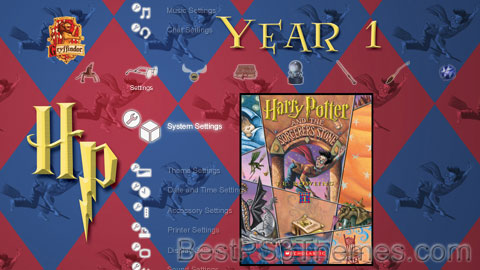
(7 backgrounds)

Author J. K. Rowling Cover artist Thomas Taylor, Cliff Wright, Giles Greenfield, Jason Cockcroft Country United Kingdom Language English Genre Fantasy Publisher Bloomsbury Published 26 June 1997 – 21 July 2007 Media type No. of books 7 Website www Plot[edit]
Early years[edit]
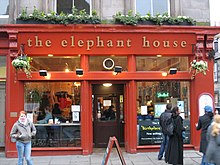
Voldemort returns[edit]
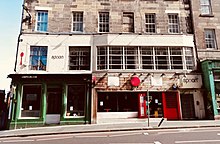
Style and allusions[edit]
Genre and style[edit]
Allusions[edit]
Themes[edit]

Development history
Steelgohst Configurations by DK
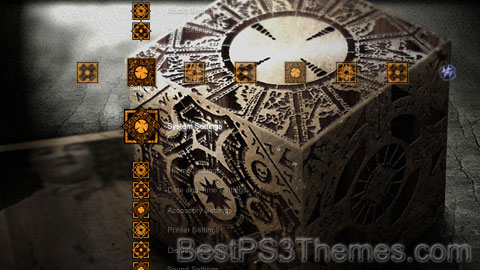
(10 backgrounds)
Copyright (c) 2007. Anoop Menon
p3textractor filename.p3t [destination path]Replace filename with the name of the p3t file, and replace [destination path] with the name of the folder you want the files to be extracted to. A destination path is not required. By default it will extract to extracted.filename.Fringe
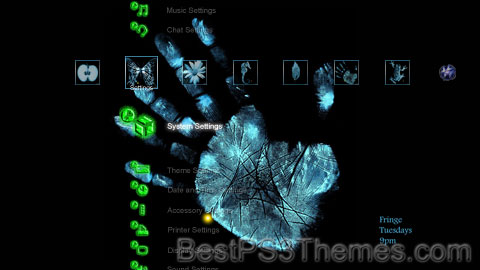
(6 backgrounds)
![]()
Arts and music[edit]
Television and entertainment[edit]
Science[edit]
Other uses[edit]
See also[edit]
HEROES: Save the Cheerleader…
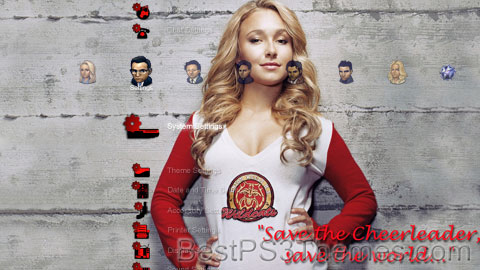
(9 backgrounds)
Copyright (c) 2007. Anoop Menon
p3textractor filename.p3t [destination path]Replace filename with the name of the p3t file, and replace [destination path] with the name of the folder you want the files to be extracted to. A destination path is not required. By default it will extract to extracted.filename.The Lament Configuration by DK
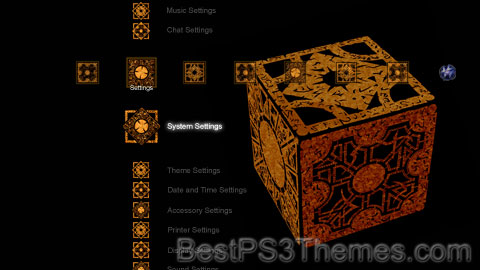
(3 backgrounds)
Copyright (c) 2007. Anoop Menon
p3textractor filename.p3t [destination path]Replace filename with the name of the p3t file, and replace [destination path] with the name of the folder you want the files to be extracted to. A destination path is not required. By default it will extract to extracted.filename.Scarface #3
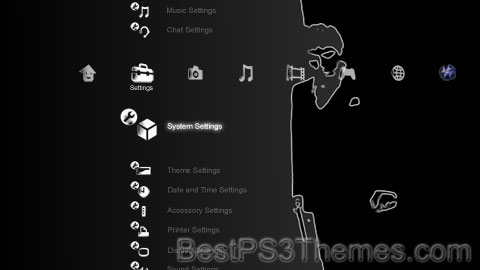
(1 background)
![]()
[edit]
Characters[edit]
Other uses[edit]
See also[edit]
Transformers: Revenge of the Fallen
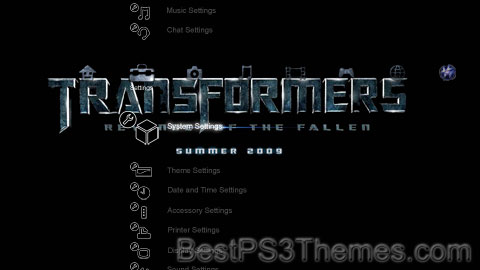
(1 background)
Transformers: Revenge of the Fallen 
Directed by Michael Bay Written by Based on Transformers
by HasbroProduced by Starring Cinematography Ben Seresin Edited by Music by Steve Jablonsky
companiesDistributed by Paramount Pictures 150 minutes[3] Country United States[2] Language English Budget $200–210 million[4][1][5] Box office $836.5 million[6] Plot[edit]
Cast[edit]
Live-action[edit]
Voices[edit]
The named Constructicons are:
Non-speaking characters[edit]
Production[edit]
Development[edit]
Filming[edit]

TMNT by DK: Perfect Edition
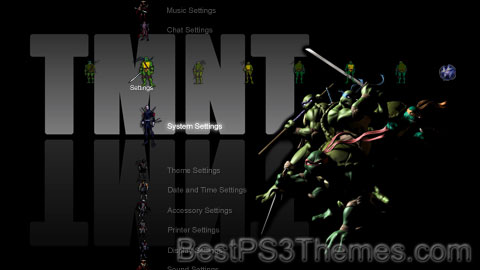
(7 backgrounds)
Copyright (c) 2007. Anoop Menon
p3textractor filename.p3t [destination path]Replace filename with the name of the p3t file, and replace [destination path] with the name of the folder you want the files to be extracted to. A destination path is not required. By default it will extract to extracted.filename.NECA TMNT by DK
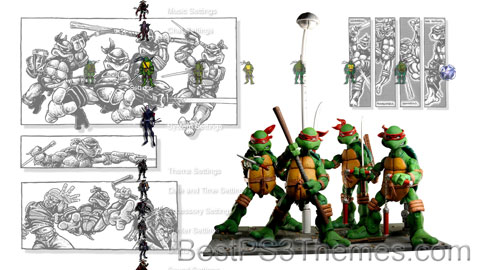
(2 backgrounds)
Copyright (c) 2007. Anoop Menon
p3textractor filename.p3t [destination path]Replace filename with the name of the p3t file, and replace [destination path] with the name of the folder you want the files to be extracted to. A destination path is not required. By default it will extract to extracted.filename.

